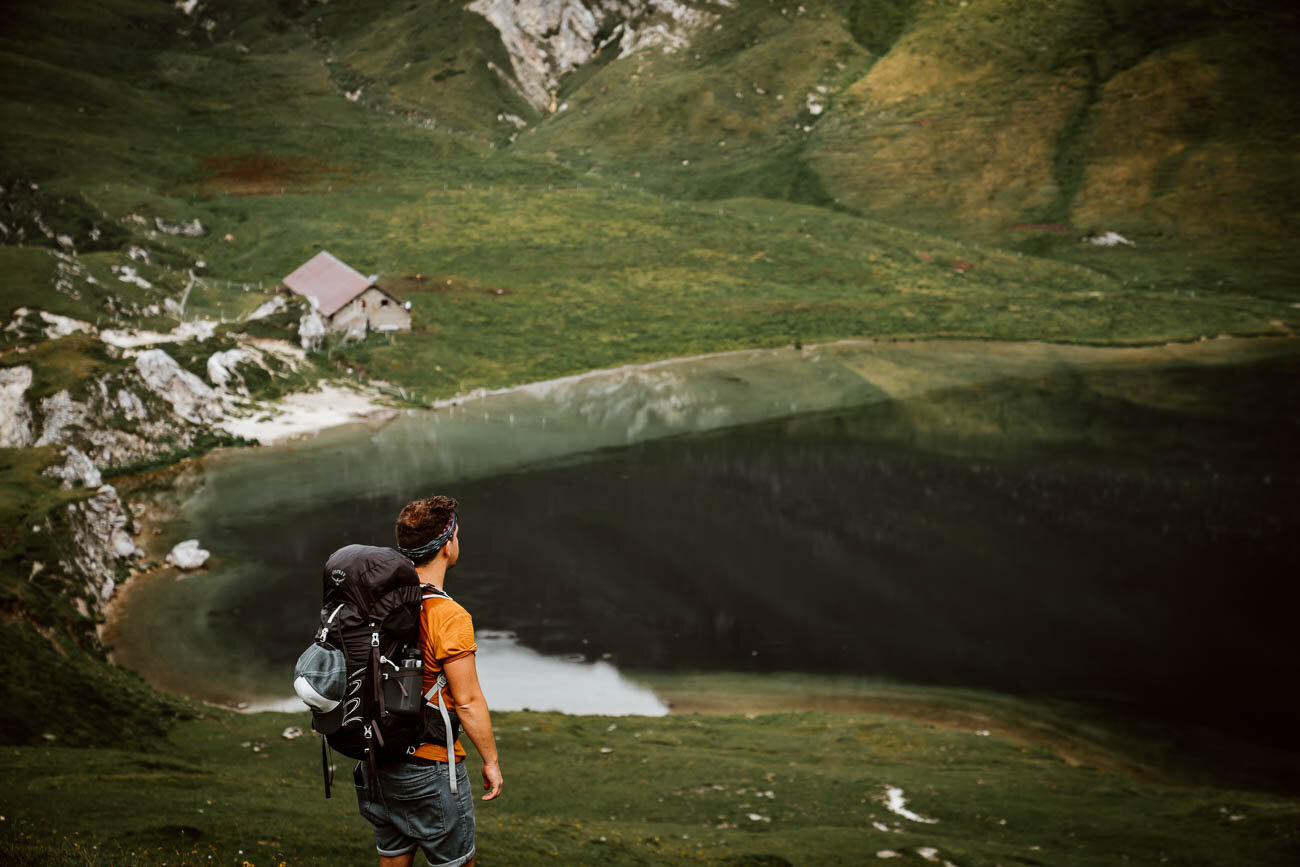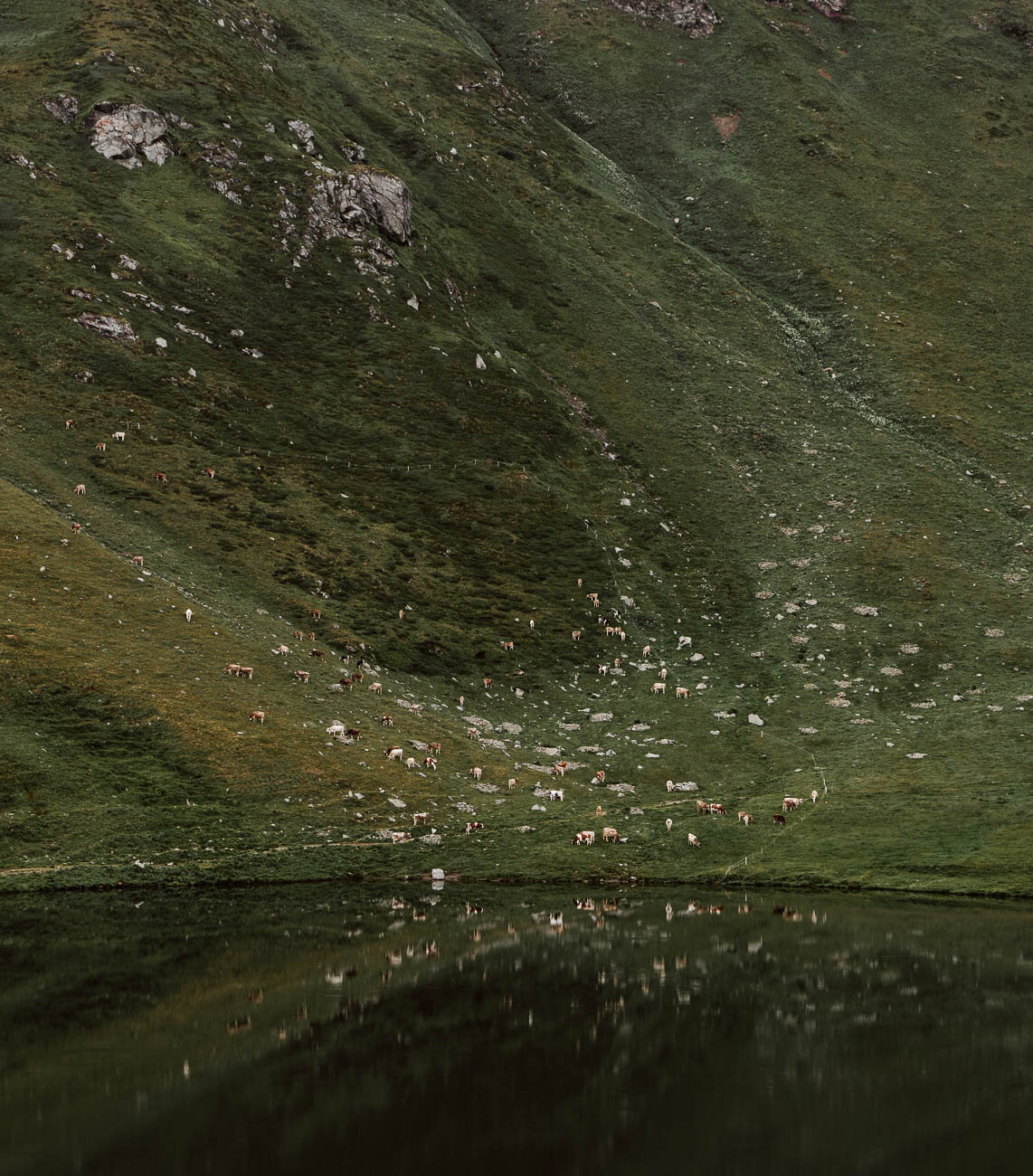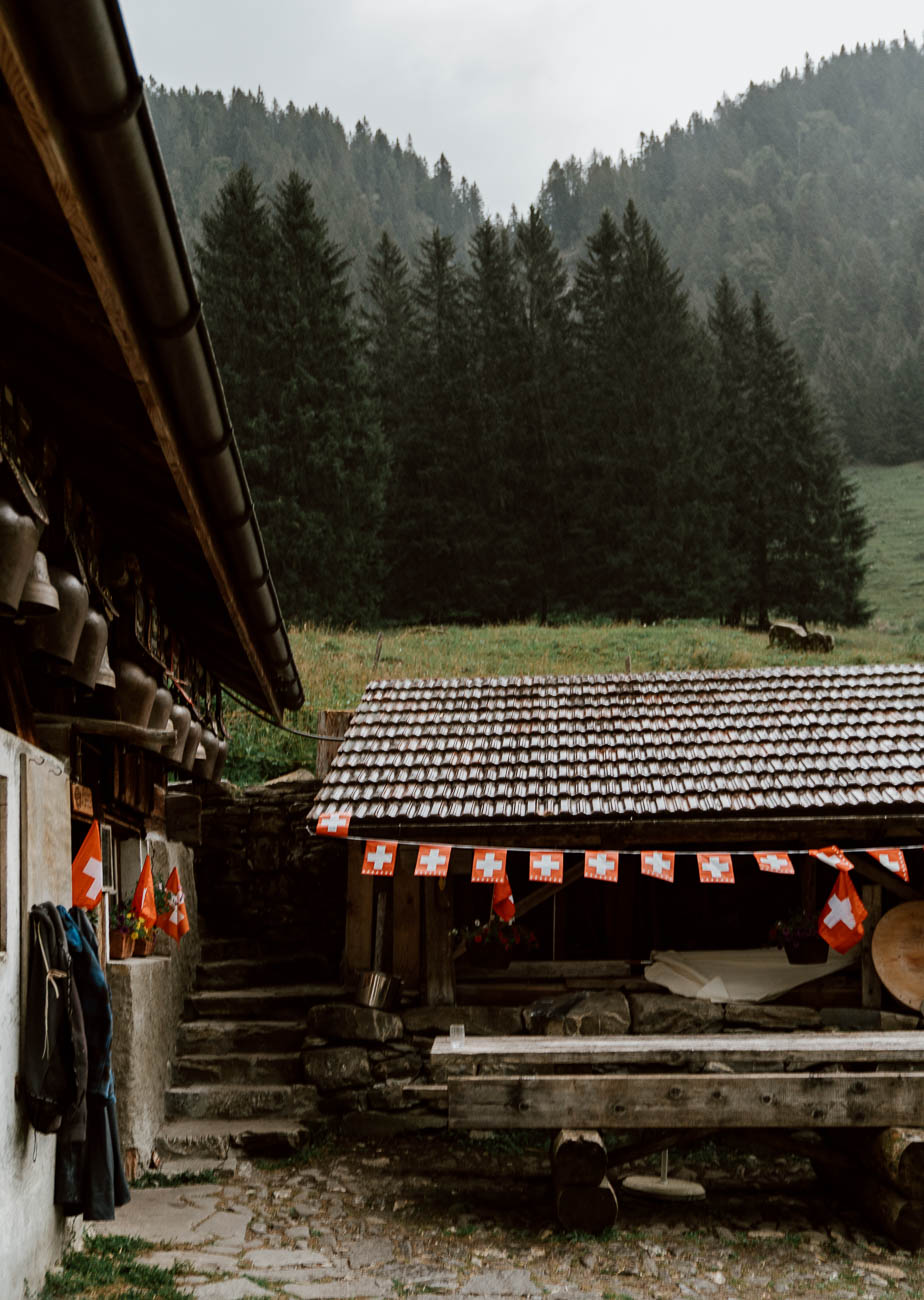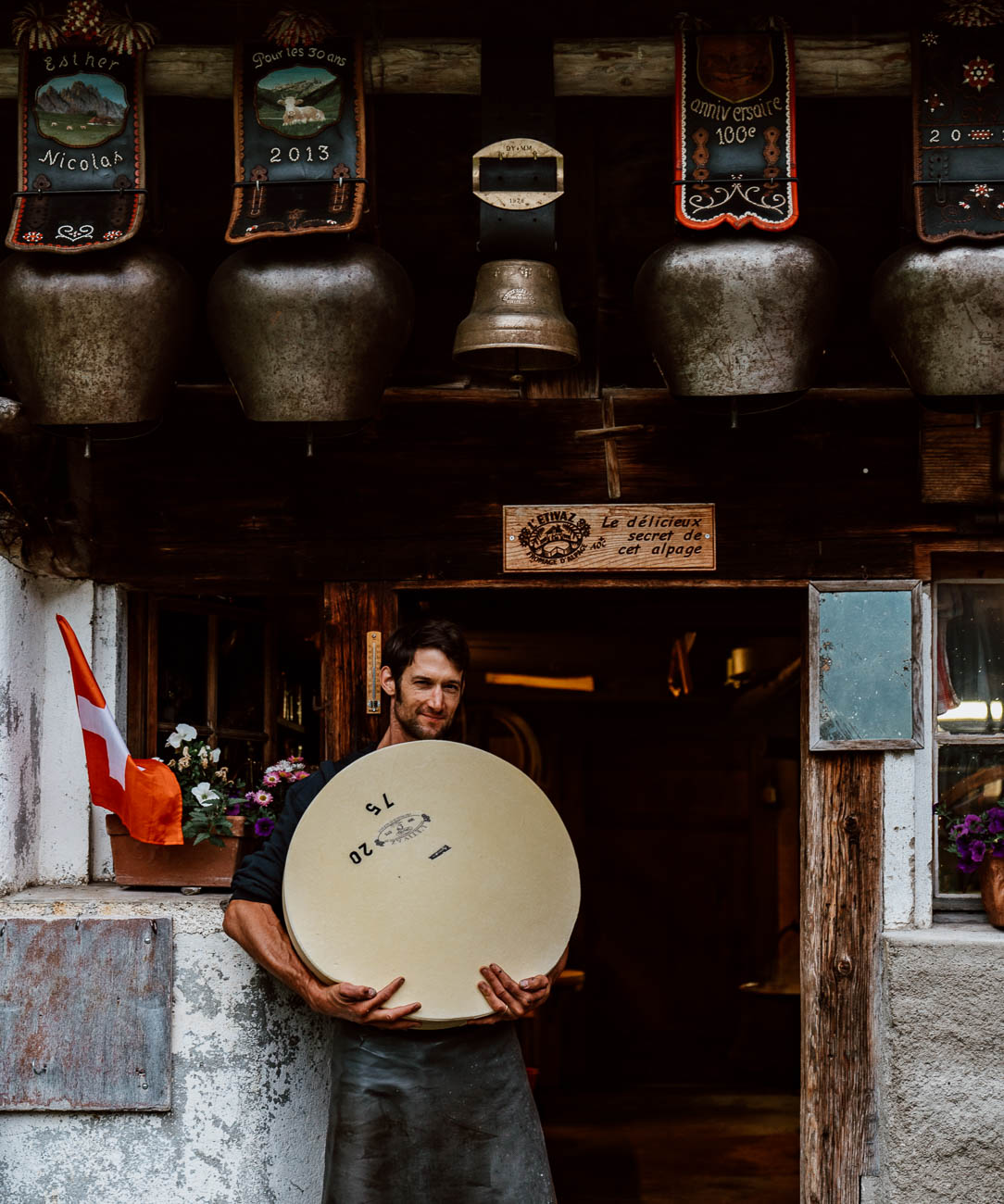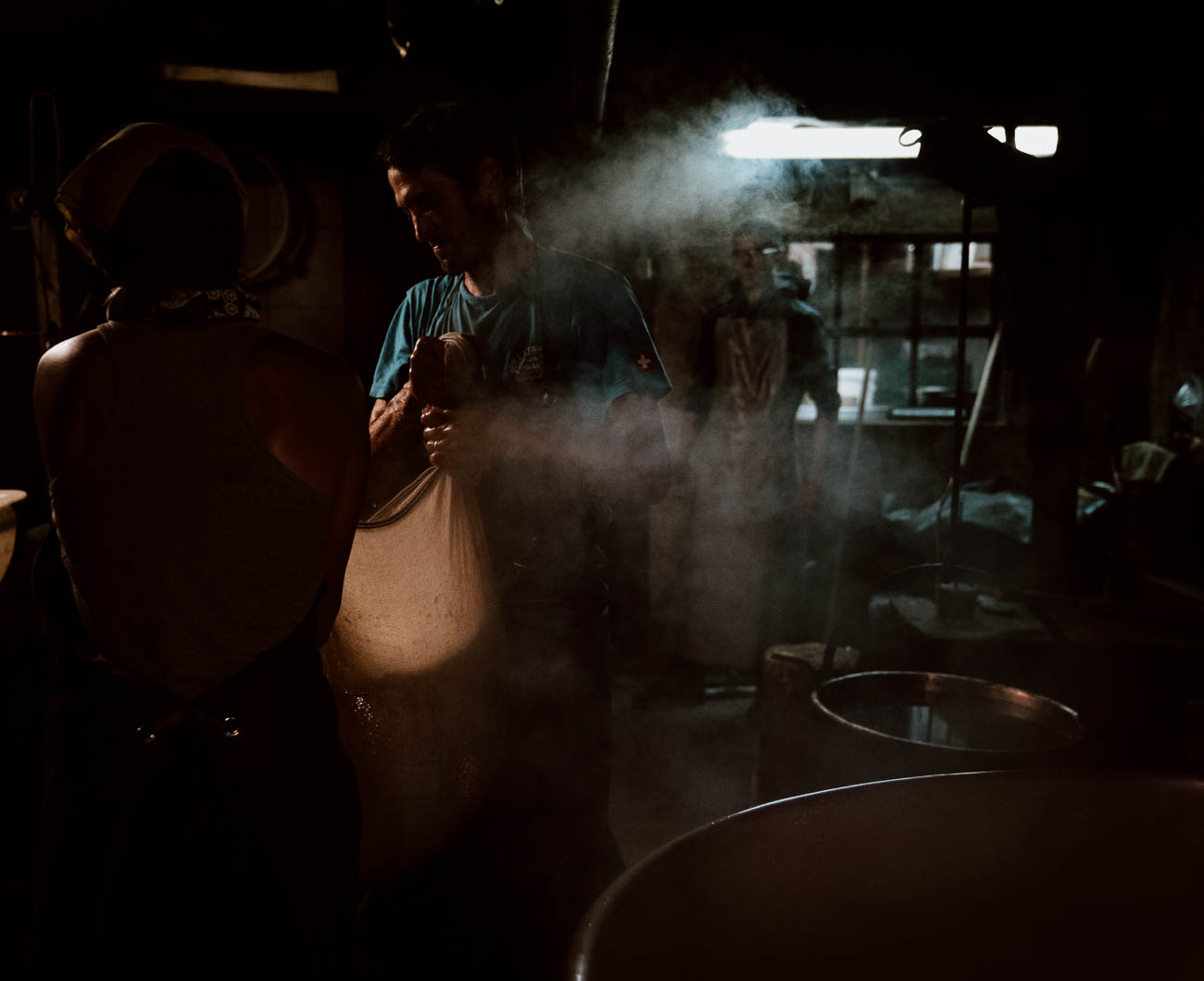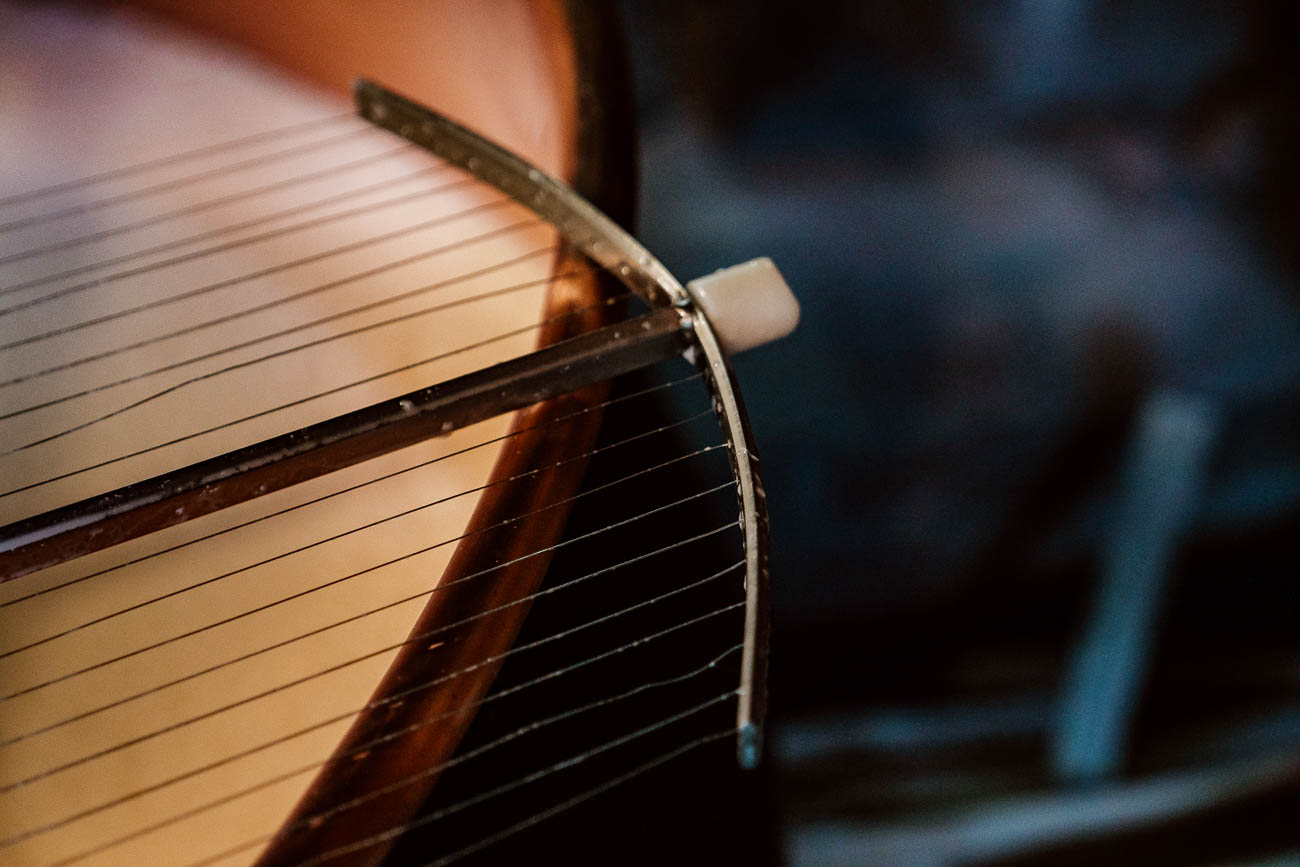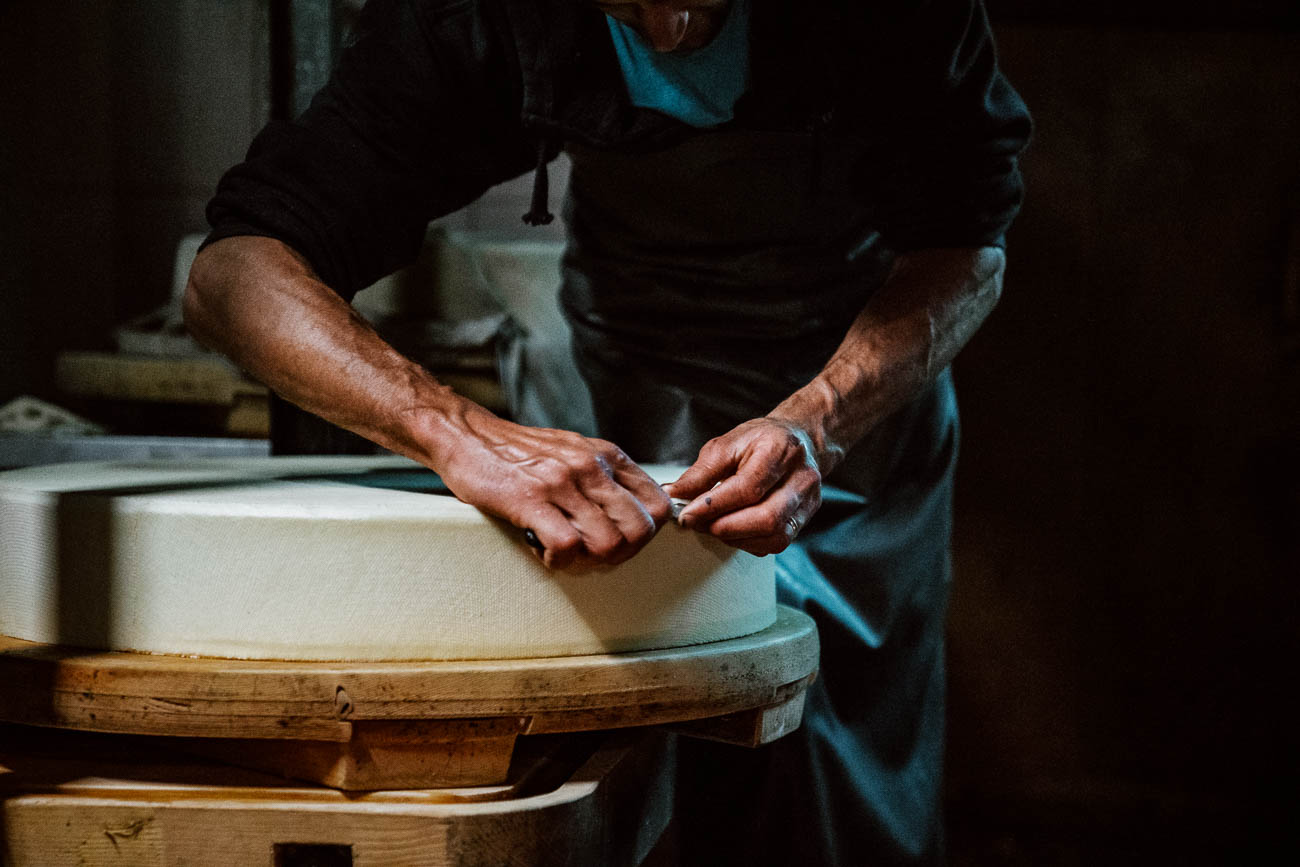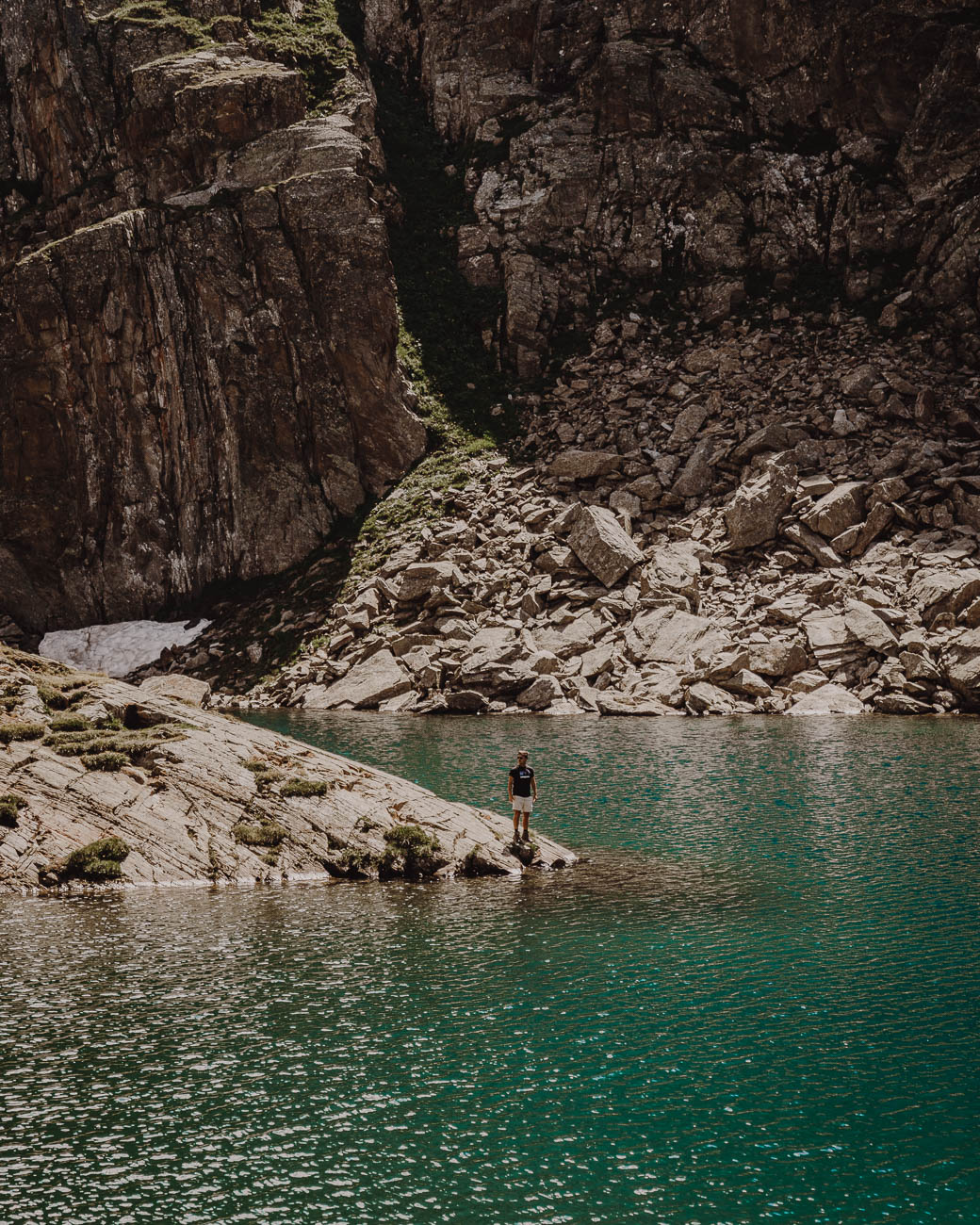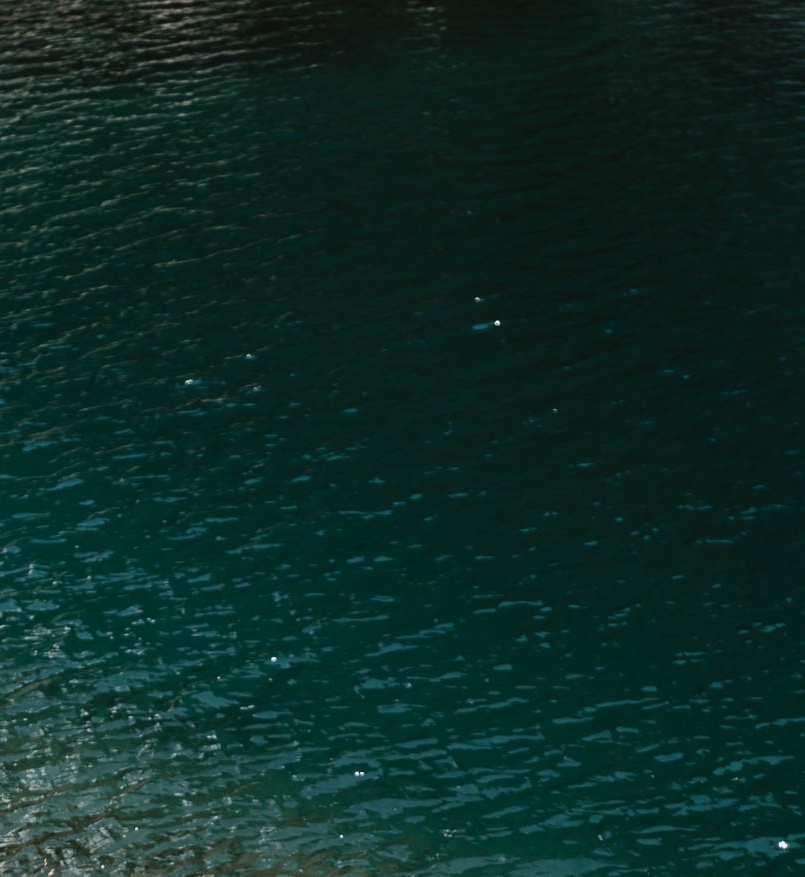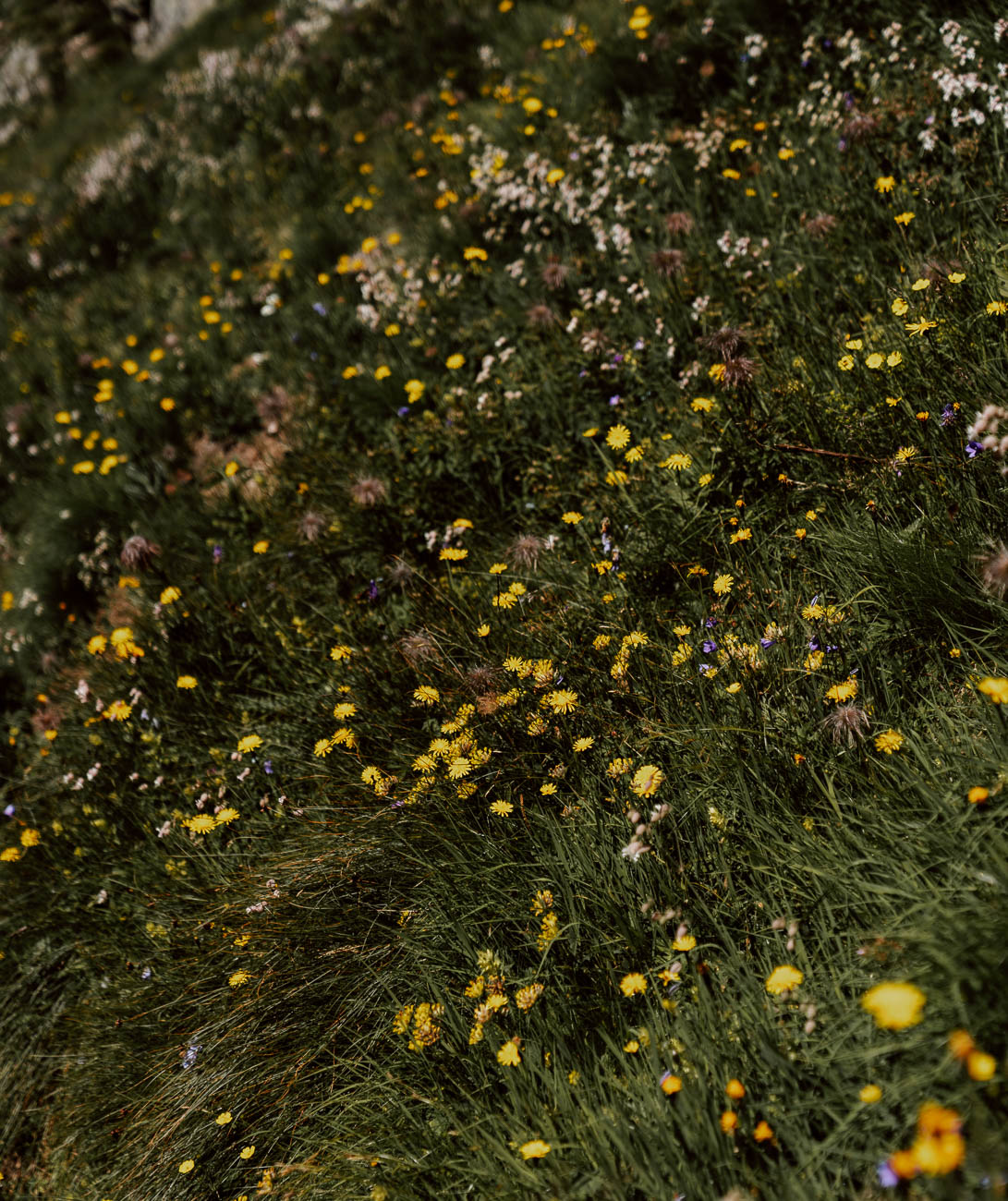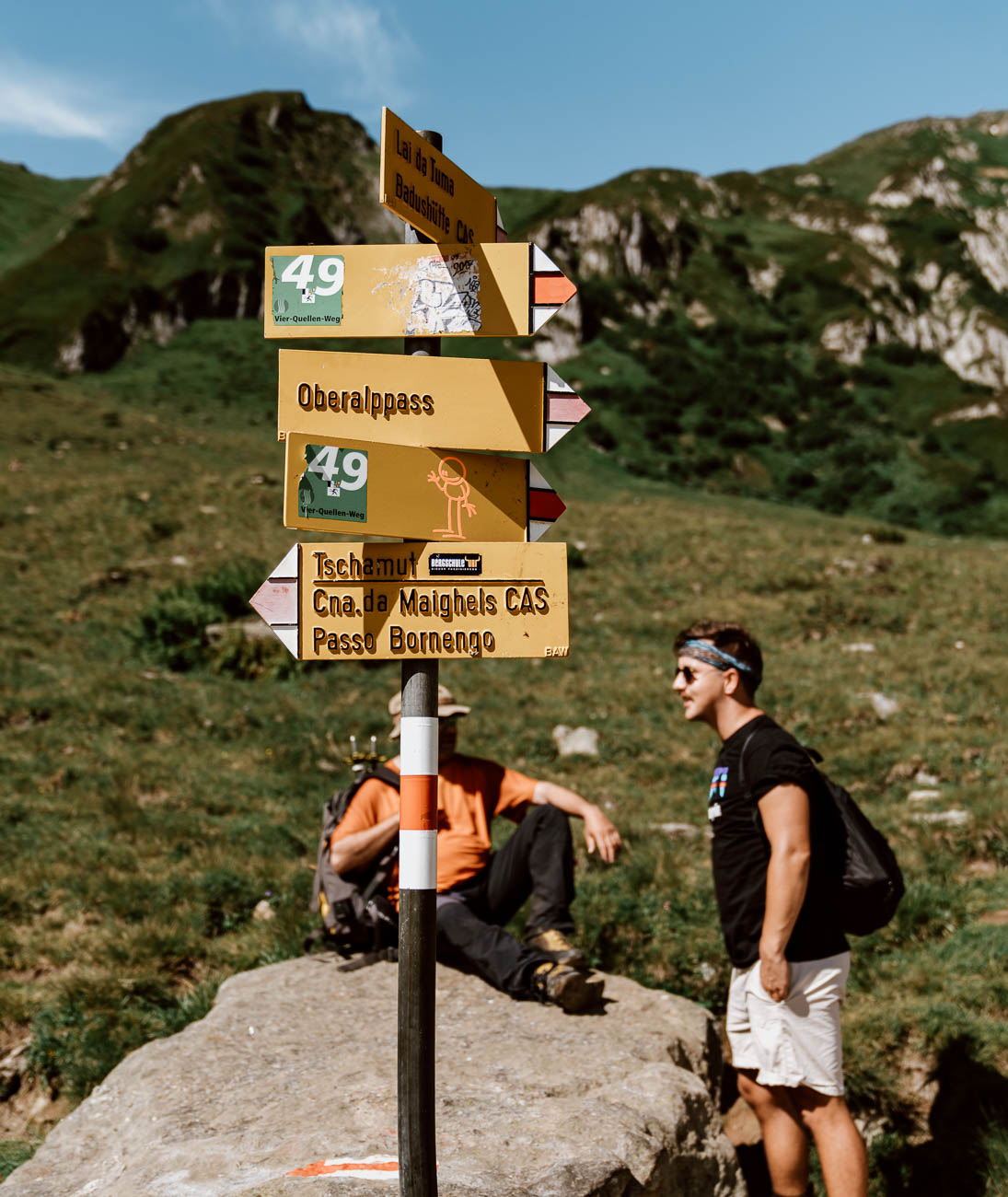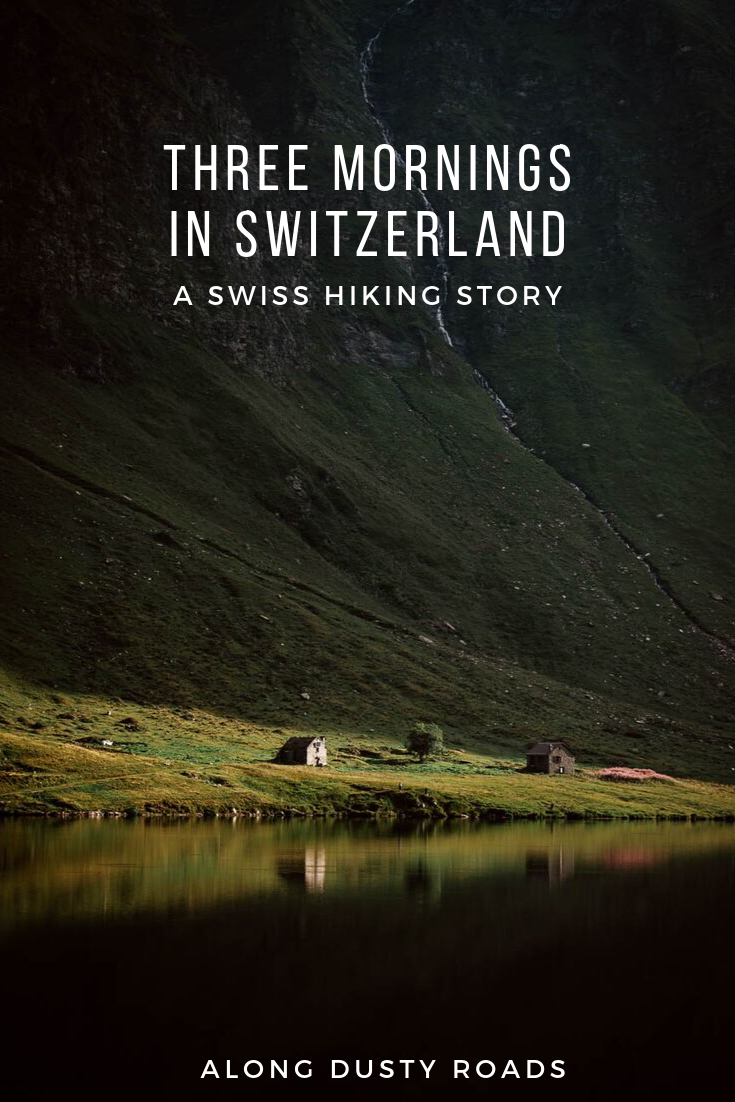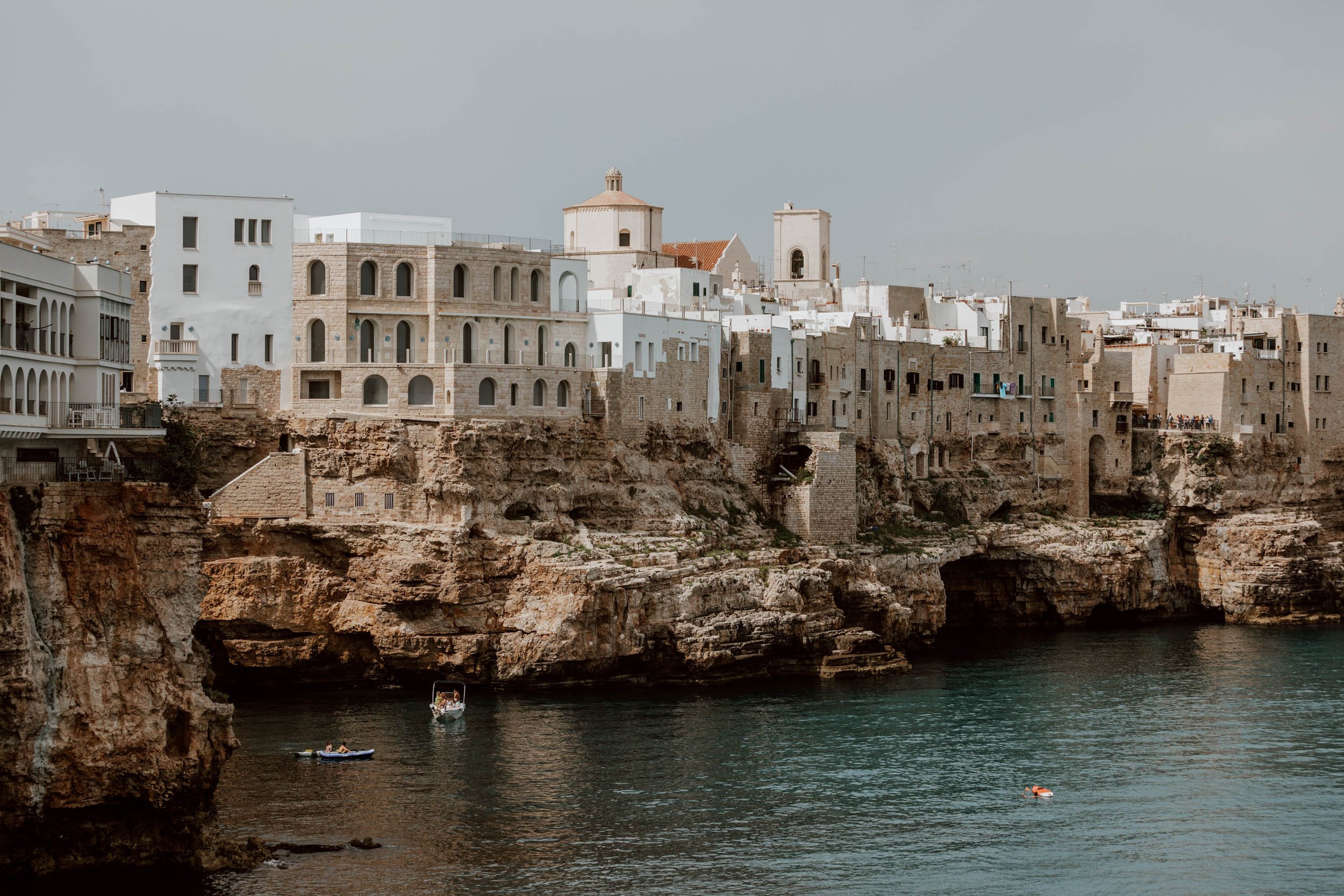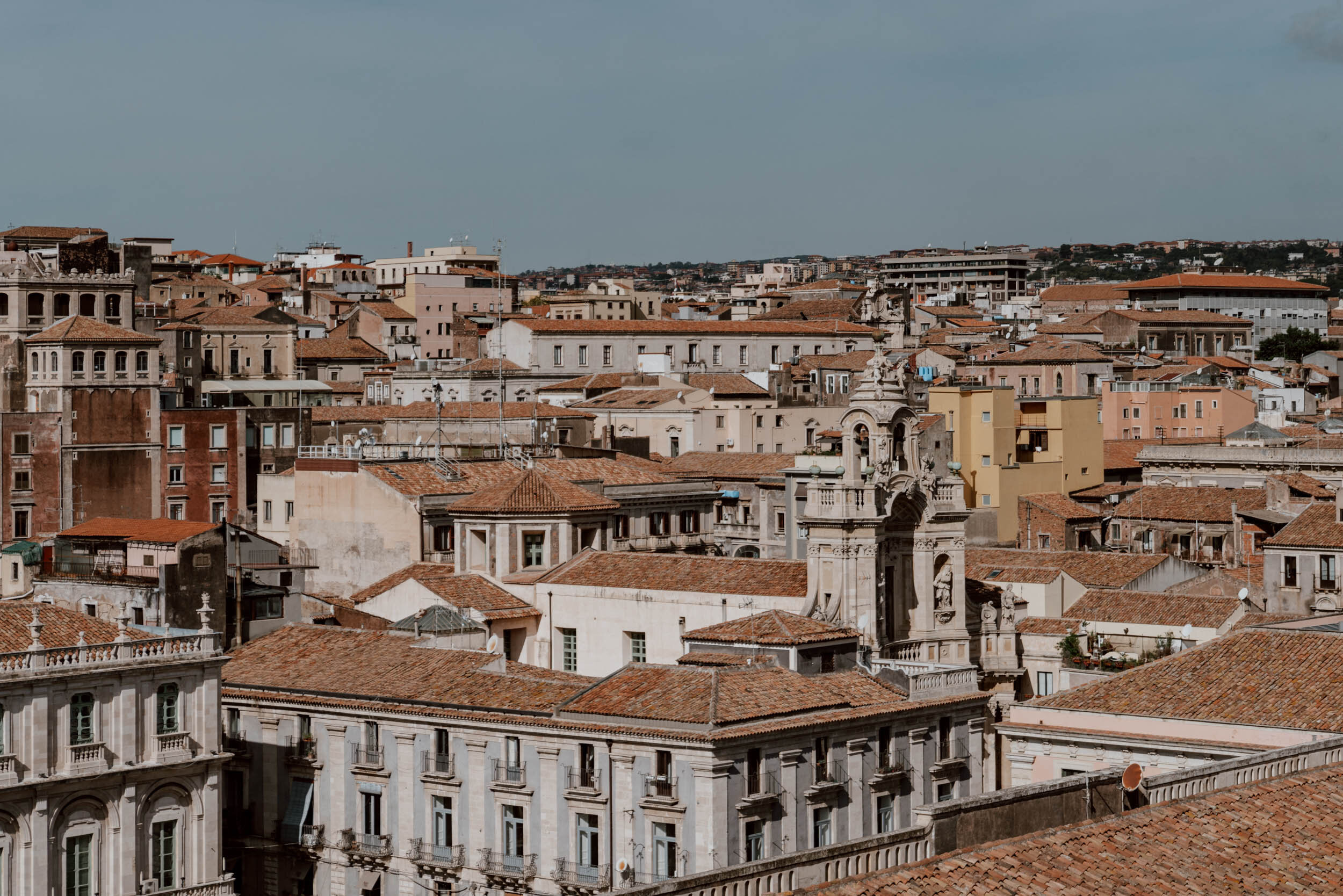"As we walked on slowly into the mountains, we remembered to look back at the beauty of what had come before.
And to stop, and contemplate the beauty which would surely lie ahead."
With two small backpacks and our hiking boots laced up, we spent nine days this summer exploring Switzerland.
We travelled by her steel train tracks and wild flower lined trails across a route which spanned three distinct regions - Pays d'en Haut, Andermatt, and Ticino. Collectively, they offered terraced vineyards and fairytale castles, secluded mountain huts and reflecting lakes, Alpine villages and the chance to experience outdoors purity.
But there were three mornings in particular which captured our first experience of the country; three mornings filled with moments which could only have happened whilst hiking in Switzerland.
Ticino, 08.07 a.m.
The bespectacled farmer with the silver curls approaches us from her empty winter barn.
She’s curious about our curiosity and perhaps a little confused about why two hikers are standing in a field, staring at a rock early on a Sunday morning.
We are in Switzerland and left the secluded mountain hut only half an hour earlier, after a breakfast of porridge and strong coffee.
Our hiking day has just begun, but our hiking week is almost at an end.
The Sunday morning breeze carries a chorus of cow bells, a clanging and chiming caused by the barn's usual bovine occupants enjoying their summer grazing on the hills behind us. Any hiker worth their salt learns pretty quickly that cows in Switzerland really do wear bells - it's isn't at all just a thing for the tourists - and that the half-Tibetan, half 80s synth orchestral melody created as their heads bob forms the soundtrack to the countryside.
The hungrier a Swiss cow is, the more music he makes. Sort of like actual musicians.
The farmer, whose ear has probably grown so accustomed to the mountain music of her cattle that their clanging melodies are as commonplace as morning birdsong, joins us in staring at the rock. She smiles as she realises the cause of our fascination atop it:
"Aaah, è una marmotta!'
It's our first time seeing these furry chubby creatures. Marmots - which look like a big frustrated beaver - are a feature of Swiss summers in the outdoors. Their burrows are pitted into the grass and their high-pitched cries stand out, even when the bells are in full flow. Our guide back in Andermatt, a rather eccentric forager by the name of Baenz who chiselled glitter out of rocks, said that their life is formed around getting as fat as possible in summer and then hibernating for the rest of the year; it’s modus vivendi which should perhaps serve as an inspiration to all of us in times of trouble.
We speak with the farmer for a few minutes in a messy melange of Italian and French, with a little bit of Emily's German thrown in for good measure. Such a linguistic mishmash has been common on these days spent travelling around three regions of Switzerland, save for the moments when English was the lingua franca. That you can meet a Swiss and they’ll be able to speak to you in several languages is one of the things that everyone knows about a country with five countries bordering it and four official languages. This microcosm of Europe which isn't in the European Union.
The farmer beckons us further afield in the field, and we follow in the footsteps of her dark green wellington boots. They're split at the back and flecked with dried mud. She points to another mound about 300 metre away, and tells us that two rare white marmots - a mother and baby - stay there.
A few moments later, as if they have been briefed and primed on the schedule, they emerge together in stark white against the green grass.
The first morning light here in the mountains is not long risen, and the dawn is still. With hours of scenic hiking ahead of us, and stormy rain clouds hanging low, the right thing to do would be to simply push on after leaving the warmth of our hut high up in the alps; to fall quickly into the familiar rhythm of boot after boot against dusty trail.
And yet we watch with the farmer.
She eventually asks us which direction we are headed, and we point upwards to the peak.
We say goodbye in three languages.
L'Etivaz, 07.48 a.m.
It starts with flames.
Each summer morning, Nicolas Mottier creates a furnace under a copper cauldron befitting of three witches plotting double, double toil and trouble. He fills it with the contents of the dozen or so heavy dull silver churns which hold the raw, fresh milk produced by his small group of cows next door. As the burn of the fire spreads beneath, the only thing Nicolas can do now is wait.
This is how L'Etivaz cheese has always been made, and it always involves waiting for the right moment.
We arrived the previous evening at this aged farmhouse in the valley at the end of the road. We were soaked to the bone. Our five hour hike along 'The Cheese Trail' had started with sunshine in picturesque Château-d'Oex, but three separate thunderstorms and a freak hailstorm had battered and bettered us. That night’s pasta and wine around the gnarled kitchen table and a dry sleep in the barn were a salve.
Nicolas, handsome with brown hair and work-weathered, is a third-generation cheesemaker. His father and grand-father also spent their summers here in the valley, where the cows are brought each summer to graze on the superior pastures of wild flower and fresh grass.
As we join him and his two children this morning in the room blackened by decades of summer woodsmoke, he tells us that "everywhere you go on the Alps, a guy is making cheese".
But every guy isn't making it this way.
L'Etivaz is a cheese for purists, started by renengades. The story goes that back in 30s, a group of 76 Gruyère producing families felt government regulations had allowed cheesemakers to compromise on crucial steps in the process. Collectively, they withdrew from the government's Gruyère programme to create their own.
They called it L'Etivaz, the name of their village, their valley, and their cheese.
And so, as the rain drizzles outside the open door guarded by black and white collie, Nicolas shows us how he makes this seasonal cheese in the exact same way as his forefathers. The rules are strict: cows must be milked at one thousand metres, the milk can only travel a short distance to the copper pot, and it must be hand-stirred and crafted over the open wood fire. The work is physical, requiring taut forearms and emboldened biceps from Nicolas and Julie (a volunteer assistant), as they move in tandem around the steaming vat. Orange sparks fly and smoke tendrils claw at our nostrils.
When the milk approaches its target temperature, the pace quickens and the room is abuzz with movement. Nicolas and Julie's arms dive a net on wooden poles in and out of the pot, three dips in total, swaddling and submerging the curds until the majority are clumped together. With a heave and delicate dancing footsteps, the load is transferred in a blur towards two moulds sitting on blue and white cloth.
Hot liquid splashes on the stone floor as they move.
"Cheese doesn't like a shock of temperature. If it's in there for one minute longer, the curds will stick to the tissue.", Nicolas explains. I consider whether the origins of the culture of precision in Switzerland, where a the matter of a minute matters so much, can be attributed ever so slightly to the cheese-makers of the Alps.
The two curd-filled moulds will each be turned six times today, before being stamped in blue with the numbers and initials, and carried by Nicolas to a shelf in the cellar next to the goat shed. There they will age for a matter of months or years.
There is a lot to not love about the modern globalised and industrialised dairy industry. A lot. But, sitting in this dark smoky room on an overcast morning watching the labour and knowledge of a small-scale artisan, serves to underpin why making choices about what we consume really matters. It matters more than ever, especially to these traditions and traditionalists that deserve to exist.
The next morning, Nicolas will rise at 5.30 a.m. to start the process all over again. His son and daughter, who spend youthful summers at the farm just like he did, will join him when they wake.
After all, there's always a guy making cheese in the Alps.
Andermatt, 11.10 a.m.
After a winding ascent through a dark mountain tunnel, the trail leaves the Oberalppass train platform. It takes us south through long grass, down into a valley and towards Swiss snowcaps. Our destination is marked on wooden arrrows.
The small lake at 2,344 metres where one of Europe's great rivers starts its story.
Baenz, who owns a cluttered kiosk and hasn't shaved for a few days, is our guide this morning. He met us in the lobby of the Raddison Blu hotel, which is one of the various projects bankrolled by a billionaire to rejuvenate Andermatt from struggling military mountain town into tourism hub.
Hiking with someone else is rare for us and, as this popular 12 km trail is accessible and manageable for most visitors, it’s not entirely necessary. Baenz is however a forager of plants and gemstones, and filled with stories about the gifts of nature.
He sees things others do not.
Our time in Switzerland started with those unseasonal thunderstorms, but there is eye-squinting sunshine today. We dispense with layers as we follow the trail upward, and let the summer heat fall on bare arms and shoulders. On our left, there's a famous mountain road which twists and turns into sailor’s knots.
We watch for a few moments as each driver slows on the bends.
As we climb, Baenz stops every five or ten minutes to let us taste or smell a plant. He shows us the inconspicuous ones which kill, those which heal, and intermittently reveal rocks which shimmer. When we take a rest, he sits on the grass and looks to the near-cloudless sky like an Indian chief; he tells us it's going to rain tomorrow.
The trail eventually takes us to this small lake hidden in the mountains.
From this small lake, pure water cascades and runs, expands and extends, rushing and rises through Liechtenstein, Austria, France, Germany, and the Netherlands. The river Rhine begins here at Lake Tome.
Everything has to start somewhere.
From here to the sea, the water's story keeps on going for 766 miles. Cities and empires have been built on its banks, and fallen as it's flowed on by, a constant current as civilisations have come and gone, lived and died.
But here, we cross the river with a single stretched out step.
We eat soft bread and hard cheese by the water's edge. On our right, a couple lies flat and rest weary heads atop their backpacks. Multilingual Baenz, who travelled for years by bicycle across Asia, converses with a group of three white-haired couples resting on rock admiring the views. They are from Germany, and tell him they came to Switzerland with a specific purpose - to see the source of the Rhine. It was something they all felt they had to do before they passed away.
Thoughts of death brought them to this place where so much life begins.
Baenz suggests we walk a different route back down into the valley via dying glaciers, melting in the sunshine. The alps have more glaciers than any other part of Europe, and Switzerland has the most amongst alpine countries. Sadly, the majority of country's 1,500 glaciers have retreated every year since 2001 and are expected to vanish by 2090.
The three of us are silent as we watch the slab of ice await its seemingly irreversible fate.
In perhaps the most un-Swiss moment of the whole trip, Baenz can't recall what time the train leaves. He knows it's every hour, but unfortunately he doesn't know which minute of every hour. Trains in Switzerland, which have taken us between the three regions in a blissfully punctual and precise way, are as good as the stereotypes have told us. Better actually.
When the schedule says you will arrive at 13.53 and have 3 minutes to connect for the 13.56 train on platform 11, it really means it. Someone somewhere has planned it all out, an omnipotent omniscient fat controller, and for us Brits it's a strange sensation to have the urge to moan and our collective miserableness about trains completely removed from the shared list of quotidian complaints.
And so, we simply amble together down the wild flower way. There's a handsome group of goats drinking from the first flowing trickles of the Rhine. All three of us fill up our bottles. With his trusty pocket knife, Baenz surreptitiously cuts at chives and arnica to bring home in small bundles. We talk of overtourism, the outdoors, and the origins of the Gotthard Tunnel.
When we are ten minutes from the station, we see the train arrive.
It leaves exactly two minutes later without us.
The next morning, we’ll carry our backpacks to catch the 08.29 morning train to Göschenen.
It leaves on time.
As Baenz predicted, the rain will arrive soon after.
And still the Rhine river runs.



